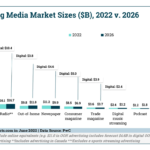The great softening is upon us.
The Federal Reserve’s most recent Federal Open Market Committee (FOMC) statement Wednesday (July 27), which accompanied another historic 75 basis point rate hike, had scant commentary addressing the state of consumer spending.
That document puts things simply: “Recent indicators of spending and production have softened… Inflation remains elevated, reflecting supply and demand imbalances related to the pandemic, higher food and energy prices, and broader price pressures.”
There’s little else in the statement, save a later mention that the central bankers are “highly attentive to inflation risks.”
Terse, yes, but the words imply — well, plenty. And the action of lifting rates in the latest volley, representing the most aggressive anti-inflation push in four decades, speaks just as loudly as the words.
The FOMC statement comes on the heels of data released by the Fed earlier in the month that shows that, overall, in May, consumer credit increased at a seasonally adjusted annual rate of 5.9%. Revolving credit increased at an annual rate of 8.1%, while nonrevolving credit increased at an annual rate of 5.2%.
So, outstanding credit balances have been on the rise, which in turn means that same debt (and the debt that has already been on the books) becomes more expensive right into the teeth of rising rates.
Loss of Purchasing Power
As Karen Webster noted in recent commentary, “the majority of consumers have lost a lot of purchasing power over the last year. Unfortunately, those least equipped to handle it — lower income and paycheck-to-paycheck consumers — have been hit hardest of all.”
Read more: Why Retailers Should Worry About Inflation but Dread the Wealth Effect
The higher echelons of earners, and those with much more disposable income at their, well, disposal, are not immune to the pressures of inflation, either.
Amid stock market volatility — and if things go south within portfolios — it’s been estimated that there’s a 3.5-cent loss in spending power for every dollar of wealth destruction felt by consumers, with half of that spending pullback felt in the short term.
Elsewhere, PYMNTS data shows that more than half (53%) of consumers said their financial condition is worse in 2022 than it was in 2021. Nearly a third said it will deteriorate over the next 12 months. Sentiment has a significant impact on whether consumers want to, or will, open their physical and digital wallets. And we’ve just seen the first decline in household net worth in two years, predicated on a $3 trillion decline in stock market wealth.
As for the great pullback amid the great softening, 70% of retail shoppers said they’re cutting back on purchases they don’t consider essential, including 87% of consumers earning over $100,000. Few consumers said they’ll compromise quality to save money — instead, they will reconsider whether a purchase is necessary at that time.
That implies there’s no substitution effect, but rather, people will hold out till what they really want is on sale or otherwise looks more affordable (say, if inflation moderates).
The devil is in the details, and the details are being brought to us with each new government report.
We’ll get a gauge of inflation and the state of the consumer Friday (July 29) through the Personal Consumption Expenditures Price Index. That June reading may add to a core consumption increase that is topping 4.5% on an annualized basis.
View Original Article




















